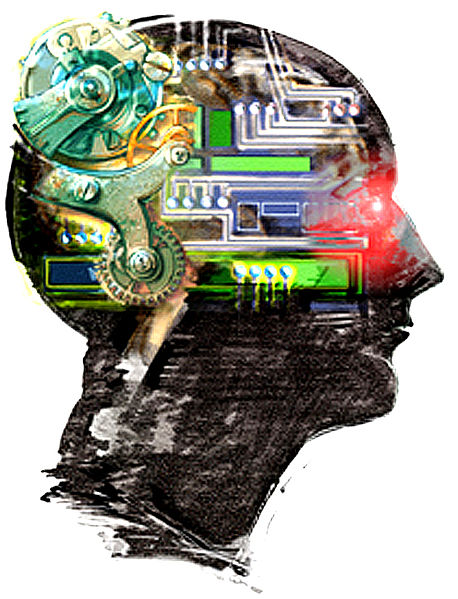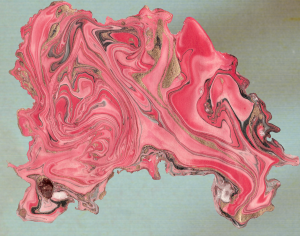
Robo Sapiens: Social inequality in a post-human age
by Matthew Broomfield | December 21, 2013
Human extinction may be nearer than you think. Biotechnology is evolving at an exponential rate, and the barriers between man and machine are being rapidly redefined. Soon, it will be impossible to tell where man ends and machine begins. There may come a time when we are no longer homo sapiens at all—a time when we are post-human.
Transhumanists are those who see this fundamental shift in the human condition as an end in itself. They feel a responsibility to harness emerging technologies, transcending the limitations of being human. They foresee a society where suffering is eliminated, the damage we do to the Earth is halted, and immortality becomes a reality.
This is not a new desire. The major world religions, whether they refer to paradise or heaven or nirvana, all concern themselves with transcending the physical and temporal limits of ordinary human life. Throughout the mid-twentieth century, these aspirations were re-examined in the light of scientific advancement, most notably by a group of futurists based at the University of California in Los Angeles, who called themselves transhumanists. All philosophical approaches which openly seek to bring about the post-human condition are now grouped under the name ‘transhumanism’.
Theirs is no purely theoretical enterprise. From recent developments in cochlear and retinal implants, which extend the body’s natural functions where they have failed due to congenital disease, to the artificial memory augmentation afforded by computer memory banks, many of the technologies which surround us today can be deemed transhuman. Ray Kurzweil, a transhumanist theorist, divides evolution into six epochs, and traces our development thus far through four of these phases: Physics and Chemistry; Biology and DNA; Brains; and Technology. Citing the speed with which the internet has transformed our lives, alongside a host of other technological advancements, Kurzweil predicts an explosive development as we enter the fifth epoch: The Merger of Human Technology With Human Intelligence. This will occur within the next 100 years, he thinks, in line with a “law of accelerating returns”.
The ethical problems raised by transhumanism border on the spiritual. What happens when engineered intelligence outstrips humankind’s understanding or control? In his seminal transhumanist essay The Coming Technological Singularity, Vernon Vinge argues that the resulting post-human era will be “simply too different to fit into the classical frame of good and evil”.
The noted economist Francis Fukuyama has described transhumanism as the world’s most dangerous idea in Foreign Policy magazine, raising the concern that equality is “the first victim” of transhumanism. “Underlying [the] idea of the equality of rights is the belief that we all possess a human essence that dwarfs manifest differences in skin colour, beauty, and even intelligence… if we start transforming ourselves into something superior, what rights will these enhanced creatures claim, and what rights will they possess when compared to those left behind?”
Peter Rothman, editor of the leading transhumanist publication H+, tried to answer Fukuyama’s question when he spoke to ISIS about the socioeconomic difficulties of a post-human world. “Generally, I expect that machine intelligences might be kinder than humans since they have no biological history of violence, anger, or abuse.” However, he does accept that certain safeguards are necessary. “We need to look mostly at coercion… employers shouldn’t be able to require employees to enhance themselves [or] take specific drugs.”
Rothman recognises that people might be unwilling to adopt technologies for a host of religious and moral reasons. However, given people’s current enthusiasm for technology and our immemorial timor mortis, transhumanists are confident that most will accept radical future technology as beneficial to society. There will always be those who refuse enhancement, but Rothman is confident that these reprogenetic Amish would not become second-class citizens, and that their choices would be respected. “In an expansive and abundant society that values morphological freedom, individuals could choose to remain as twenty-first century humans if they wanted.”
That said, Rothman and his fellow transhumanists see the technological enhancement of the human organism as a necessary and inevitable step, eradicating suffering at all levels of society. “We can use currently existing technology applied at the bottom of society to generate a wave of abundance and thereby solve many of the worst social and economic problems we face.”
The shift to a post-human condition is an ongoing process, and it is unlikely that transhumanist technology will become available simultaneously across society. All machines are ultimately an extension of the human body’s natural functions. Every tool humankind creates, from a crude stone axe to the prosthetic limbs of Oscar Pistorius, is designed to push the boundaries of what we can achieve. Throughout history, the best tools have invariably been available to those with the greatest wealth. The same can be said of what Rothman terms “positive and life affirming… transhumanist ideas and technologies that already exist, such as cochlear and retinal implants”. Enhancement of our bodies might lead to enhanced social stratification, with the rich enjoying biotechnological enhancements denied to the poor.
A future society founded on “free access to knowledge and morphological freedom” is the stated goal of the transhumanists, says Rothman. However, it is difficult to see this society becoming a reality without a period where access to transitional technologies is limited to those who can afford them. The solution is to adopt a more equitable model when phasing in new technology: “Want to usher in an abundant global society? Start at the bottom.”
Rothman cites a project by the Solar Electric Light Fund (SELF), an American non-profit organisation, as exemplifying the way that technologies can be implemented in communities with meagre financial resources. The project involves “electrifying the entire Kalalé district of northern Benin with photovoltaic solar systems”. SELF have introduced a system of solar-powered pumps, making local agricultural processes simpler and more effective. The solar panels also provide electricity to public spaces and community centres.
Rothman portrays SELF’s involvement in Benin as representative of the way “relatively low technology [can be applied] in a novel way that changes the lives of people from one of struggle and poverty to one of abundance”. It is an admirable model, making use of simple technology to revolutionise agriculture and infrastructure in the region. However, this analogy between current and future technologies obscures several key issues.
Firstly, solar technology is not an emerging technology. It has taken decades for solar energy systems to become affordable in communities like those SELF is supporting in Benin. Secondly, although the photovoltaic solar systems provided by SELF are purchased by the villagers who use them (through microcredit financing), the fact remains that SELF is a charity. Biotechnology is largely the preserve of multinational corporations. The charitable economic model of SELF is unlikely to be mirrored by the leading biotech companies currently developing transhuman technologies, such as Monsanto, which is already renowned for monopolising the agricultural industry in developing nations. Monsanto’s business model involves using biological patents, meaning that processes that might be universally available are instead used for the economic benefit of the company.
Finally, there is the risk of substandard human enhancement technology being implemented in developing nations. Much of the developing world has been scarred by pharmaceutical piracy and illegal drug testing: in Nigeria, the Pfizer-Trovan drug trial left 11 children dead as the result of a highly controversial (and possibly illegal) trial of an unregistered drug. Rothman claims: “The most important safeguards we need are those which protect the right to conduct research and develop enhancement technologies.” Serious consideration must surely also be given to the potentially huge disparities in availability, safety and quality of the technologies which might emerge.
Transhumanism is egalitarian in theory; it remains to be seen whether it will be so in practise. Transhumanists aspire to a future where social stratification is a thing of the past, eradicating suffering by making augmentative technology universally available. However, transitional technologies are a potentially lucrative market, and have great potential to widen existing social disparities.
Human extinction may be nearer than you think, but this is not necessarily something to be feared. Rothman makes it clear that “transhumanists reject the notion of a fixed human nature and see our nature instead as a dynamic evolving process that can be directed under conscious control.” The forthcoming biotechnological revolution could see social inequalities transcended; it could equally see them exacerbated. In its idealism, the transhumanist movement must not forget its egalitarian roots.

![‘Fiction’s about what it is to be a fucking human being’ [David Foster Wallace]. Is it? 6970074272_f580c22601_o](https://isismagazine.org.uk/wp-content/uploads/2015/03/6970074272_f580c22601_o-227x300.jpg)


